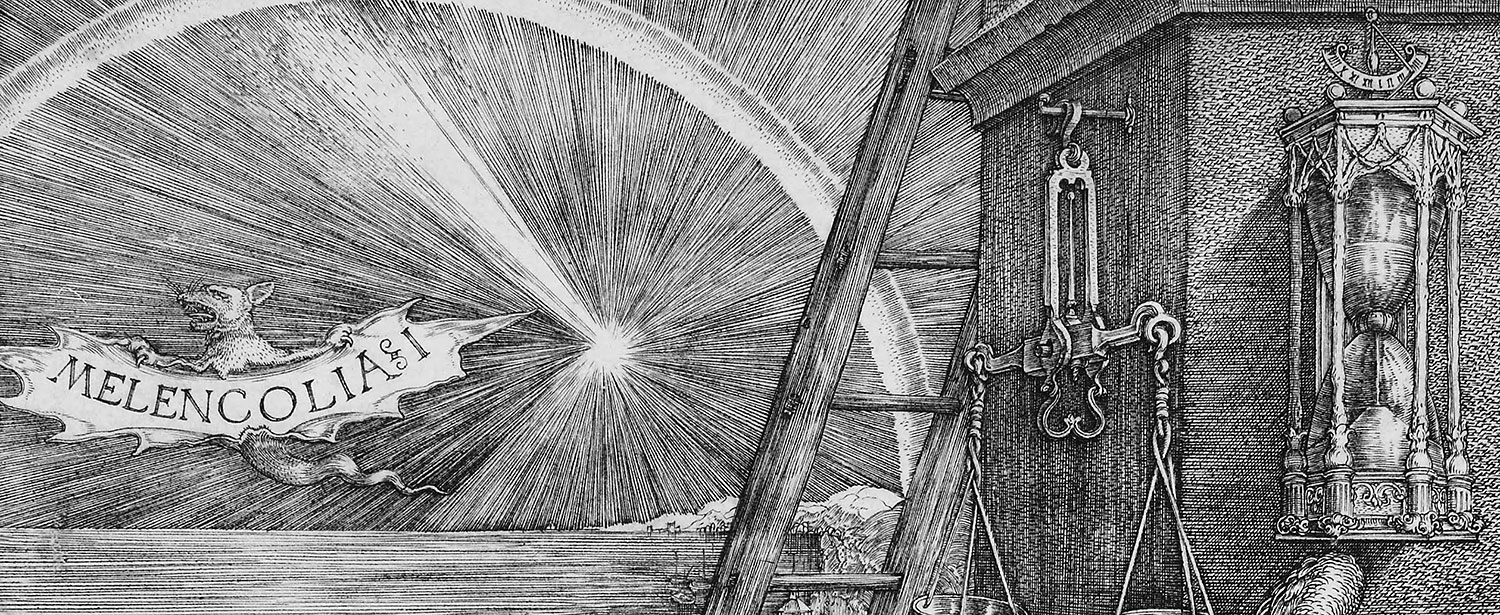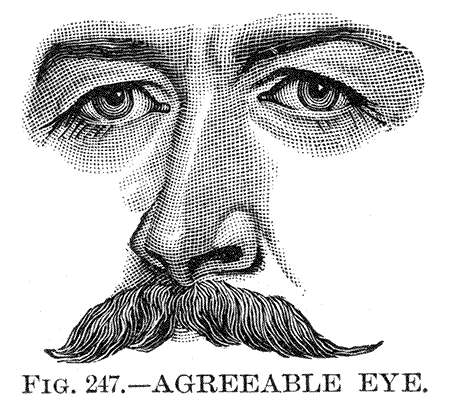at hasard

An extract from Dürer’s ‘Melancolia I’ (1514)
I think that this learned alienist takes a rather absurdly alarmist view of an intrinsically insignificant phenomenon. He follows it along the downward ladder, to insanity; our path pursues the upward ladder chiefly. The divergence shows how important it is to neglect no part of a phenomenon’s connections, for we make it appear admirable or dreadful according to the context by which we set it off.
It is a distinctive smell, woodsmoke and burnt trash, but it hasn’t been familiar for years, not since we left Mongolia, and even there it was quickly scattered by the winds. It was in Mongolia that I started running, or sort of running, if one can call that running which is no faster than a walk, although it makes the gestures of a faster movement. 1 When I mentioned it, the medical officer asked, ‘But why run? Why not just walk?’ Les mots justes. There can be, could be no retort, not to an amiable but disinterested authority mildly discontent with ticking boxes.
Were I to attempt an answer (which I did not then), I would say that it is a question of categories: arbitrary, whimsical, personal, yet necessary – and firm. To run is to move towards something, let us call it light, away from something else, let us call it darkness. It is, or was – for me – a categorical action, not an exercise regime; what William James might call one of the ‘yeses’ of life, or perhaps a ‘no’ in the service of a greater ‘yes’. 2 I am wandering from my point.
It was nearly at that point on the thermometer where Fahrenheit and Celsius concur, both in agreement on the bitter cold. It was winter, in Mongolia. It was five in the morning, and I went outside to run. 3 I had been running in the morning since the previous April (or thereabouts), and it had become routine. I had a route around the well-lit public square (conveniently one kilometer in circumference), empty in the morning cold, and lined to the south with parked cars one or two deep and to the north with a cluster of buildings. I knew the shadowed corner, dark with trees, where the snow had packed down, slippery as the worn tufa of distant monuments, but only if one were not paying attention. It was so cold that even ice did not seem slick.
On this particular morning, I rounded the southwest corner of the square, emerging from the shadow of the trees. There is a shaded straightaway, then a well-lit segment where the road divides to provide a small loop for parking; this was always packed with cars and, as I recall it, there was a shadowed trash bin, or something else associated with refuse. It was the only point in my route that afforded any chance of deviation: I could choose to bear right, into the street, which was usually clear of debris but somewhat darker in the shadows cast by the cars, or I could bear left and go between the line of parked cars, where hazards were more visible, but which also involved actually turning and thus a greater chance of falls. As I was hesitating in my not-quite run, I noticed, from the corner of my eye, movement to the right, and instinctively began creeping left. Looking ahead, at the vanishing point (was it a dumpster?) where the two lines of parked cars appeared to converge, I saw three dogs. I looked back to my right: another two dogs.
They were all sizes, these dogs. Four of them were street dogs, of the type that (if they survive the winter) were chased down by truck and shot in spring before whelping. I do not approve of this, mind, but that is what happened. One at least was large and moderately healthy – somebody’s khashaa dog out for a lark. The one that made me nervous was the smallest dog, the spearhead of the trio in front of me. It was about thirty pounds or so, an unearthly grey in the streetlight, but the light glinted flat off its eyes, the pupils glaucous in the cold. 4 It looked at me, and I looked at it. The dog was cold and very hungry and any other characteristic it may have possessed was swallowed entire by those facts. The dogs behind me encouraged me, were herding me, towards this encounter. I slowed before the turnoff to the loop. I looked at the dog. The dog looked at me, and the two dogs flanking it began to fan out and move forward. I stooped – as though to grab a rock, as recommended when? In a safety and security briefing? In a joke? The dogs checked, encountering a language they knew.
There was no rock, of course. What there was, though, was the shortcut through a gate, across the brightly lit square, direct to the alley that led to the stairway to the apartment where I was staying. I moved sideways to the gate, hand held as though to throw something. The dogs remained still and watched. I went through the gate and dropped my imaginary rock before turning to cross the square. I would like to imagine that I moved with nonchalance (as though from a bear), but it is equally possible I ran as fast as I could. I don’t remember how I got across the square. I do remember stopping and looking back, from the other side, and seeing the dogs by the gate, watching me. I looked at them. They looked at me. Still. Cold. Hungry.
The spring after the incident with the dogs, I was fit enough to run around the local park (a five kilometer loop), which was a rough pentagon and included a long slope up to a point where I turned to the left, running anti-clockwise, to head along the tree-lined highway. On a hill to the right, there was a gilt statue of the Buddha, always surrounded by pigeons. As the weather grew warmer, I began encountering people. First was the athlete, who always managed to lap me (though by the time I left, it was only near the end of the run). Then, much later, when dawn crept back to the time for running, I encountered people walking clockwise and bowing at intervals. I didn’t, at first, realize why – until one morning I looked over my shoulder and saw the statue of the Buddha, which winked back in the clear light of the morning sun. 5
- A few weeks ago, I saw people running thus around the cemetery, and felt a kinship, but kept my distance.[↩]
- But some things defy rationalization, and I am not particularly fond of dialectics. It is just a story, after all.[↩]
- I will not bore you with a detailed recollection of my wardrobe: it was mostly woolen, of ingenious layers, and entirely sufficient, which is all you need to know.[↩]
- It reminded me, after the fact, of one of my favorite films.[↩]
- This springs to mind at the moment because with all of the smoke from the wildfires I haven’t been able to go outside as much lately, or walk as much, and that got me to thinking about why I like to walk and be outside. There are any number of philosophical meditations that have been written about walking, none of which I will rehearse here. I walk because it is the only way to ward off melancholy, which, like the dogs of Mongolia, is always hungry, always cold, and never satisfied. I find that, to keep melancholy at a distance, I need to walk between four and six miles a day – any less and I can still see the glint of its eyes, flat, dead, wild, a force of nature. This is time-consuming, sometimes tiresome, and downright impossible when the air is hazardous to breathe. Running was more efficient in terms of time, but led to more strained shins, scraped knees and other unpleasant side effects. Perhaps I will get back to it one day, but for now, so long as the air is clear, I will continue to walk. Perhaps I will even take the dog with me sometimes.[↩]
